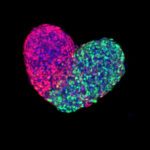Link to Pubmed [PMID] – 33526425
Link to DOI – dev17606510.1242/dev.176065
Development 2021 02; 148(2):
Half a century after Lewis Wolpert’s seminal conceptual advance on how cellular fates distribute in space, we provide a brief historical perspective on how the concept of positional information emerged and influenced the field of developmental biology and beyond. We focus on a modern interpretation of this concept in terms of information theory, largely centered on its application to cell specification in the early Drosophila embryo. We argue that a true physical variable (position) is encoded in local concentrations of patterning molecules, that this mapping is stochastic, and that the processes by which positions and corresponding cell fates are determined based on these concentrations need to take such stochasticity into account. With this approach, we shift the focus from biological mechanisms, molecules, genes and pathways to quantitative systems-level questions: where does positional information reside, how it is transformed and accessed during development, and what fundamental limits it is subject to?

